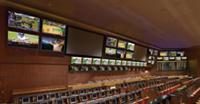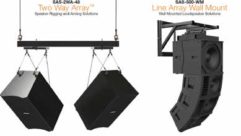

Is Plasma Dead?
says Andy Nelkin, president of Panasonic Professional Display Co.
Is plasma dead? it depends on who you ask. The overwhelming opinion is no, but that doesn’t mean it’s not dying.
Credit: Courtesy Panasonic
“We see our sales rising. We don’t see any indication that plasma’s dying,” says Andy Nelkin, president of Panasonic Professional Display Co. Yet in the past few years, high-profile brandsâeuro“ including NEC, Sony, and, most recently, Pioneerâeuro“have exited the plasma market.
“LG, Samsung, and Panasonic; those are the three major brands left selling into the space,” says Chris Connery, vice president of PC and large-format commercial displays for research firm DisplaySearch. “Those that don’t have a core investment in the technology are opting not to have plasma-branded products in the pro space, or even the consumer space.”
Panasonic, meanwhile, devotes five overseas factories to the production of plasma panels.
Plasma vs. LCD
Panasonic also manufactures LCD panels, which broadens their reach across the display market. LCD displays can be as small as 1 inch, while plasmas lend themselves to much larger screens, like Panasonic’s 103-inch model. Both have their pros and cons, so their differences are mainly application based.
“Emissive technologies [like plasma] have always been able to produce better color saturation, better contrast, and the like,” Nelkin says.
“I don’t think you can use anything but plasma for digital signage,” says John Bangs, president of AV/Com Integrators of Severn, Md., adding that they’re brighter and have better angle of vision. Connery disputes the brightness claim, but confirms that one of plasma’s advantages is contrast ratio. Known for their ability to display fast motion, plasmas have also overcome drawbacks that previously plagued them in the past, such as burn-in and lifespan.
“Our products last 100,000 hours,” claims Nelkin. “That’s not dead; that’s to half-brightness.”
Price points have improved, too. “Plasmas have fallen through the roof,” Bangs says. While that may be true of the much larger displays, Connery says plasmas lost the price war in the 32-inch space, and are losing in the 40- to 42-inch space. “Plasma really only has a price advantage at 50-inch and above,” he says. “For the first time .. as of Q4 2008, large-format LCDs out-sold large-format plasma 58 percent to 42 percent.” Despite those numbers, Connery says the best-selling SKU in the commercial space is a 42-inch Panasonic plasma. So if pros still love plasma, why does the industry appear to be dwindling?
“Everyone’s a consumer on the weekend,” says Connery. “The growth of LCDs in the consumer space and the fact that larger LCDs are available at more affordable prices have really helped awareness.” Preconceived notions acquired as a consumer can easily bleed into the pro market.
Bangs believes Pioneer’s consumer focus may have its been downfall. “Pioneer was not a big player, [but] they were a quality player,” he says, explaining the difficulty higher-priced plasmas have competing with bargain TVs like Vizio. “Panasonic, for example, is selling more in the professional world, so they’re not being hit as hard.”
“[Plasma’s] still a wonderful technology,” attests Connery. “It’s not always the best technology that wins in the marketplace. Consumer perceptions can take on a life of their own.”
Market Saturation
Consumers may be more familiar with LCDs because of the influx of brands in the market. IT distributors and companies like Hewlett-Packard and Cisco, which recently introduced 40- and 52-inch LCD signage models, add to the dozens of companies already in the field. Production capacity is a key indicator in DisplaySearch’s forecast of a technology’s longevity. With so few companies manufacturing plasma displays now, “far and away the investment in the production of LCD technology is way outpacing that of plasma,” Connery says.
And what happens to plasma if Samsung or LG drop out, too? Can one or two companies maintain a technology’s viability for the long term?
For now, DisplaySearch forecasts plasma dropping below 25 percent of the commercial market in 2011, and to 10 percent of the market by 2015. “As LCDs get larger and more cost-effective at the larger sizes, we expect plasma to continue to focus on its strengths. Right now that’s 50-plus sizes; a couple years from now it might be 60-plus sizes,” Connery explains.
That’s not factoring the introduction of new technologies and applications, such as videowalls, which may or may not affect the market’s desire for big/small or LCD/plasma screens.
Still, there are reports Panasonic is already heeding warnings by increasing the number of sizes it offers in the large-format market, between 65 and 103 inches. “We have a road map that calls for more energy efficiency, thinner, better, brighter, better contrast ratios,” says Nelkin. “Now, whether organic LEDs, which are in the future, impact the road map, we’ll have to see. But that will impact every road map.”









